The forearms are by far one of the most neglected parts of the body as far as weight training is concerned. Whenever people go to work out their arms, they focus mostly on their biceps and triceps, while completely forgetting their lower arm.
However, having strong forearms is important for several reasons, with increased strength and aesthetic appeal being just two of them.
How to get bigger forearms is the question that we're here to answer today, and we're going to provide you with all the best techniques to get those forearms looking like Popeye the Sailor.
Function and Anatomy of the Forearms – Why Strength Matters
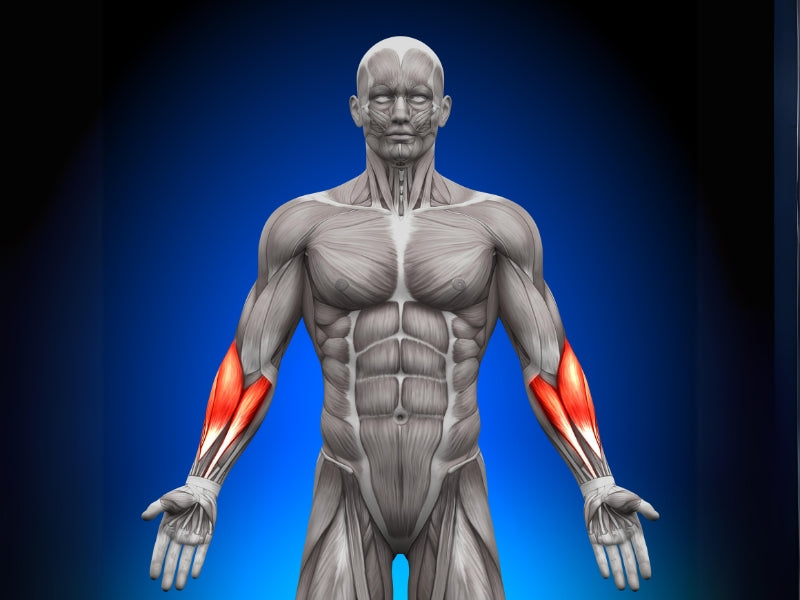
Before we talk about how to grow bigger forearms, you need to know what muscles the forearm consists of, and what their main functionality is.
Your forearm is very important, a very complex part of your body that includes several different bones, tendons, and muscles that work in combination to allow for stability and movement, particularly in the hand and wrist.
Your Forearm Muscles
The muscles in the forearm can be divided into two separate categories, the extensors and the flexors. The flexors are found on the palm side of the forearm, otherwise known as the anterior, whereas the extensors are found on the back of the hand, the posterior.
The flexors are responsible mainly for finger and wrist flexion, and the six main muscles here include the palmaris longus, the flexor carpi ulnaris, the flexor carpi radialis, the pronator teres, the brachialis, and the biceps brachii.
We then have the extensors, which are responsible mainly for finger and wrist extension, and the six main muscles here include the extensor carpi ulnaris, the extensor carpi radialis brevis, the extensor carpi radialis longus, the supinator, the anconeus, and the triceps brachii.
In combination, all of these muscles work together to allow you to hold, grip, and manipulate various objects. All of the extensors are required for you to extend your fingers, and the flexors are required for you to flex your wrist and fingers.
Your forearms are very important as far as other exercises are concerned. For instance, when you do barbell curls with a supinated grip, it's your extensors that are responsible for allowing your palms to face upwards.
On that note, when your palms face down in what is known as a pronated grip, your flexors are responsible for allowing your hands to achieve that position.
For a more detailed look into the different grip positions, see our guide to supinated vs pronated grip.
Why Strong Forearms Matter
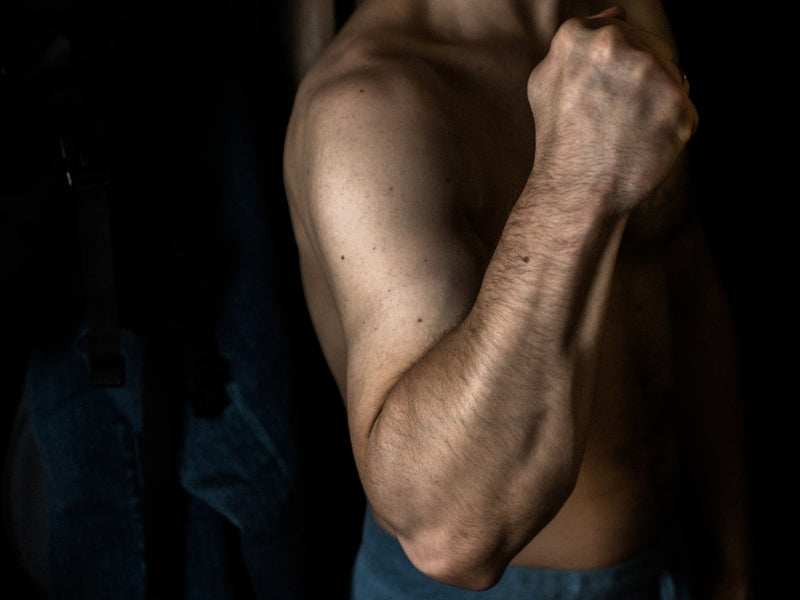
We already mentioned some of the benefits of having strong forearms, but there are still many more, so let's take a quick look at them.
Stability
If you have strong forearms, they'll help you stabilize your wrist while doing exercises such as push-ups, overhead presses, and bench presses. This ultimately makes the exercise easier while also reducing the risk of injury.
Grip Strength
Having strong forearms is also important because it will allow you to lift heavier weights with ease.
The stronger your forearms are, the better your grip strength will be. That's really important for exercises like pull-ups, rowing, and deadlifts, grip strength is of paramount importance.
Control
Not only do strong forearms help you improve your overall grip strength and stability, but they also help you control weights much better during exercises.
It allows you to really focus on and isolate various muscles in your arms, therefore leading to better overall growth when doing any sort of arm exercise.
Wrist Flexibility
The other reason why having strong forearms is so important is because it helps to improve the flexibility of the wrists, which is important for a variety of lifts.
For example, if you do a front squat and have your wrists tucked under the bar, you need very flexible wrists.
How to Grow Your Forearms – Essential Steps, Exercises, and Tips
Now that you know what the different muscles in your forearms are, what purposes they serve, and why having strong forearms is so important, let's take a closer look at some of the best ways to get those forearms bigger and stronger.
The Best Forearm Exercises
Of course, the number one way to grow bigger forearms is by exercising them, and below we have a list of several exercises that will help improve your forearm size, strength, and grip strength too.
-
Farmer’s Walk: Get two heavy weight plates, kettlebells, or dumbbells, hold them at your sides, and walk forwards for a given amount of time. The focus should be on keeping the weights firmly in your hands while walking. Repeat this for three sets of anywhere from 30 to 60 seconds.
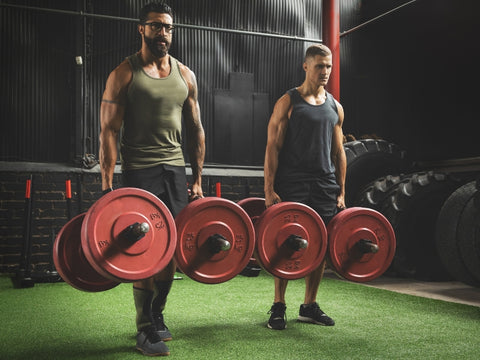
- Plate Pinchers: Get two weight plates, as heavy as you can handle, and grab them by the edges with your fingers. Squeeze those plates as hard as humanly possible while keeping your wrist perfectly straight, and lift the plates into the air for as long as you can. Perform three sets of 12 to 15 reps.
-
Hand Grip Squeezers: Get yourself a simple hand grip exerciser and squeeze as hard as you can. Most hand grip exercises are adjustable, so you can increase the resistance as you progress.
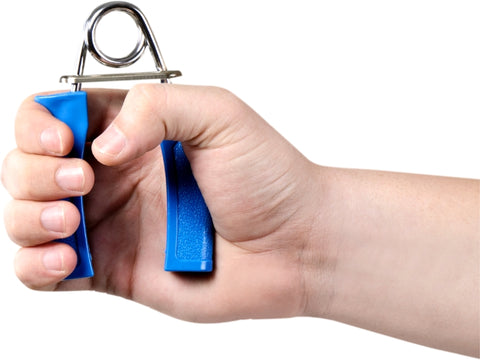
- Barbell Holds: Take a barbell and load it up with a moderate amount of weight. While keeping your arms perfectly straight, grip the bar as tightly as you can and pick it up. Hold the bar, with your focus being on maintaining a good grip. Repeat this for three sets of 15 to 30 seconds.
For more exercise ideas, see our dumbbell forearm workout.
Using Progressive Overload to Grow Bigger Forearms
Yes, knowing what exercises to perform to increase the size and strength of your forearms is important. However, it also matters how you do those exercises.
One of the best ways to grow any muscle is by engaging in what is known as progressive overload.
Progressive overload is all about increasing the amount of weight you lift over a given period of time but can be achieved in a few different ways. For instance, you can increase the overall volume that you train at by increasing the number of sets, reps, or exercises that you do.
At the same time, you can also increase the weight that you're lifting, do quicker reps while decreasing the weight load, and even use rest periods of different lengths.
By shortening the rest period, you're ultimately taxing your muscles more. Progressive overload is proven to be by far one of the best methods to grow muscles.
Rest is Essential
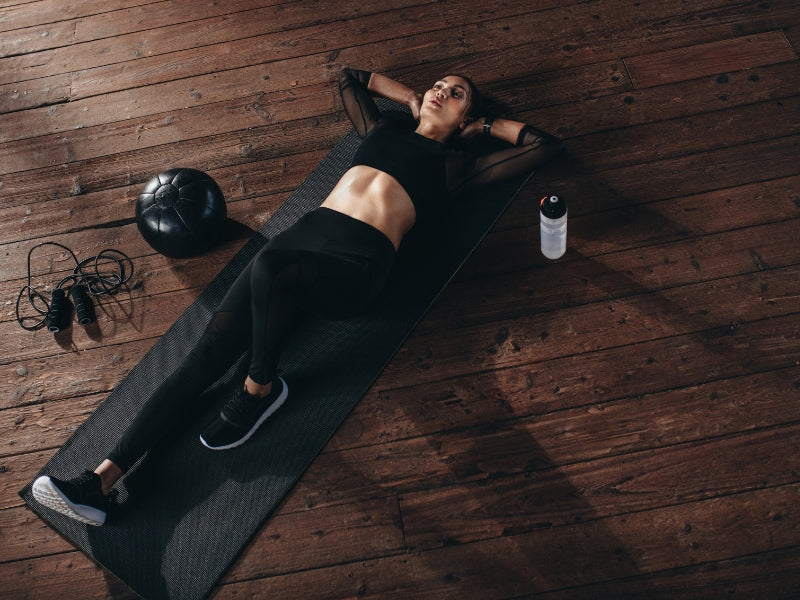
If you plan on growing those four arms big and strong like Popeye the Sailor, then you need to get enough rest every single night. It's a simple fact that the vast majority of muscle repair and growth happens while you're sleeping.
When you sleep, your body can focus all of its energy on repairing the damage that you did during the day. Of course, the damage we're talking about here are those small micro-tears in your muscles that result in increased muscle mass once they heal over.
That said, you need at least seven or eight hours of good sleep each and every single night for maximum muscle repair and growth.
Not sleeping enough is by far one of the worst things you could do as far as growing those forearms is concerned.
It's also important that you don't overload your muscles too much, by which we mean that you do need rest days from the gym. It's recommended that you take at least one, if not two rest days per week.
Active Recovery Helps Speed Up Recovery Time

Although taking rest days is important, what you can still do is active recovery. Active recovery includes things like foam rolling, stretching, yoga, Pilates, and even light walking or jogging.
Active recovery gets your blood flowing just enough to deliver increased oxygen and nutrients to your muscles, which can help reduce muscle soreness and improve recovery time.
However, these exercises should not be so taxing that you feel your muscles getting tired again. As soon as they start getting tired, it's time to stop. This is after all supposed to be a rest day.
Nutrition is Key for Forearm Growth
The other essential factor as far as growing your forearms is concerned is hydration and nutrition.
First and foremost, you should be consuming up to two grams of protein for every kilogram of body weight every single day. Fish, dairy, chicken, eggs, beans, nuts, red meat, and various supplements are all great sources of protein. This is the essential building block of your muscles, and without it, nothing gets done.
However, protein isn't the only important nutrient as far as muscle growth is concerned. You also need carbohydrates, because carbs are what provide you with the energy you need to perform those forearm workouts in the first place.
You then also need some important fats, mainly ones found in olive oil, nuts, fish, and avocados, as these are important for hormone production. If you really want to grow those forearms as big as possible, taking branched chain amino acids, creatine, and other supplements can help as well.
Related: Exercises to target the short head bicep.
Growing Bigger Forearms – Final Thoughts
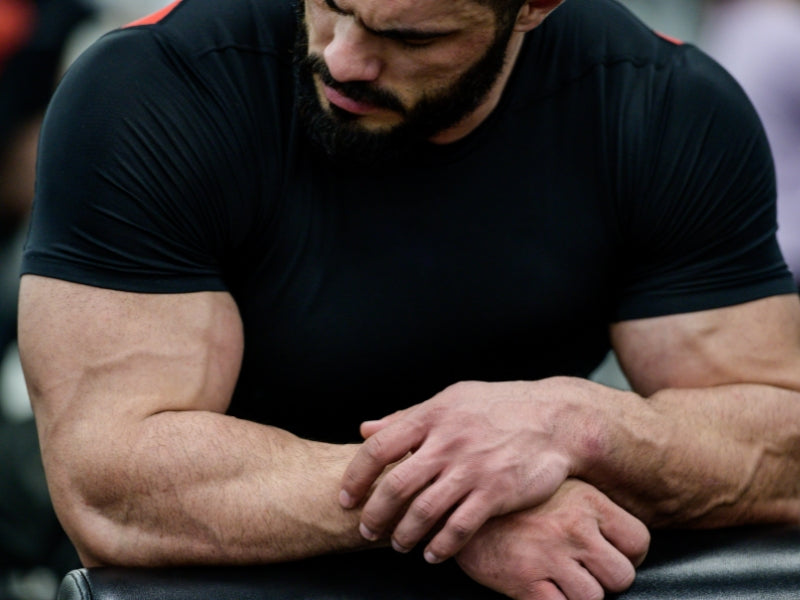
What growing your forearms really comes down to is performing the right exercises, sleeping enough, and eating right. If you do these three things, you should see those forearms growing in size and strength in no time at all.





